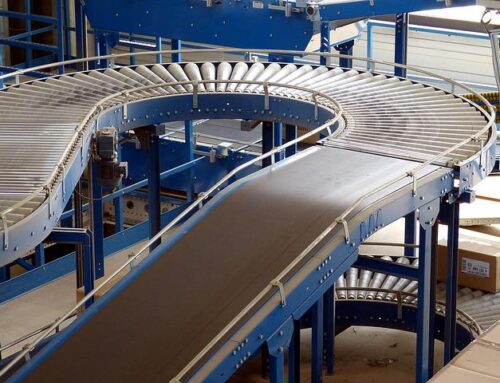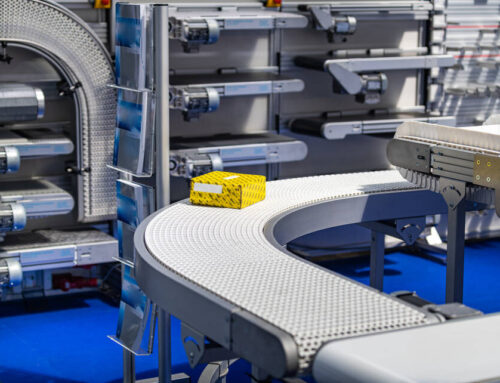Conveyor systems play a crucial role in various industries, facilitating the smooth movement of materials and products along production lines. To ensure uninterrupted operations and maximise efficiency, regular maintenance of conveyor systems is paramount. Implementing a proactive maintenance schedule, including routine inspections and timely repairs, helps prevent unexpected breakdowns, prolongs the lifespan of conveyor systems, and optimises overall production output. In this post, we explore essential conveyor maintenance best practices, offering valuable tips and guidelines to help you keep your conveyor systems in top condition for optimal performance and longevity.
Regular Inspections
Regular inspections are the cornerstone of effective conveyor maintenance. Develop a comprehensive inspection checklist covering all critical components such as belts, rollers, bearings, motors, and supports. Schedule routine inspections to identify signs of wear and tear, misalignment, loose components, or any potential issues that may lead to breakdowns or inefficiencies.
Lubrication
Proper lubrication is vital for reducing friction, minimising wear, and extending the lifespan of conveyor components. Establish a lubrication schedule based on manufacturer recommendations and the operating environment of your conveyor system. Use high-quality lubricants suitable for the specific components to ensure smooth operation and prevent premature failure.
Cleaning
Regular cleaning is essential to prevent debris buildup, contamination, and material spillage, which can impede conveyor performance and lead to costly repairs. Implement a cleaning regimen to remove dirt, dust, and debris from belts, rollers, pulleys, and other conveyor components. Consider using automated cleaning systems or conveyor belt scrapers to enhance efficiency and maintain cleanliness.
Proper Alignment and Tensioning
Misalignment and improper tensioning can cause uneven wear, belt slippage, and conveyor malfunction. Regularly check the alignment and tension of belts to ensure they are properly adjusted according to manufacturer specifications. Utilise alignment tools and tension metres to achieve optimal alignment and tension levels, promoting smooth operation and minimising downtime.
Training and Education
Invest in training programs to educate staff members on proper conveyor maintenance procedures, safety protocols, and troubleshooting techniques. Empower your maintenance team with the knowledge and skills needed to identify potential issues, perform routine maintenance tasks, and respond promptly to equipment failures. Training sessions should cover preventive maintenance practices, emergency procedures, and the importance of adherence to maintenance schedules.
Addressing Common Issues
Familiarise yourself with common conveyor issues such as belt mistracking, material spillage, excessive noise, and motor failures. Develop strategies to proactively address these issues and implement corrective measures to prevent recurrence. Promptly investigate and resolve any anomalies or abnormalities detected during inspections or operation to minimise downtime and ensure uninterrupted production.
Documentation and Record-Keeping
Maintain comprehensive records of maintenance activities, inspection reports, equipment manuals, and spare parts inventory. Documenting maintenance tasks and equipment history can provide valuable insights into the condition of conveyor systems, track maintenance trends, and facilitate proactive maintenance planning. Use digital maintenance management systems or software to streamline record-keeping processes and ensure accessibility to relevant stakeholders.
Get the Most Out of Your Conveyor Systems
Effective conveyor maintenance is essential for maximising efficiency, prolonging equipment life, and minimising costly downtime. By implementing the aforementioned best practices, you can optimise the performance of your conveyor systems and ensure smooth operations in your facility. Remember, proactive maintenance is key to preventing unexpected breakdowns and maintaining productivity.
Invest time and resources in regular inspections, lubrication, cleaning, and staff training to reap the rewards of a well-maintained conveyor system. Additionally, using predictive maintenance technologies, such as condition monitoring sensors and data analytics, can provide valuable insights into equipment health, allowing for timely intervention and proactive decision-making to further enhance the reliability and efficiency of your conveyor systems.
That said, if you have any questions or need professional advice on the most effective ways to enhance the efficiency of your conveyor systems for years to come, reach out to the knowledgeable experts at LVP Conveyor Systems. This can be done by giving us a call on + 353 (1) 8643838, by sending your enquiry to our email address [email protected] or by filling in the relevant information into our online contact form and we will be happy to help you establish the best practices to maximise the efficiency of your conveyor systems for years to come.






